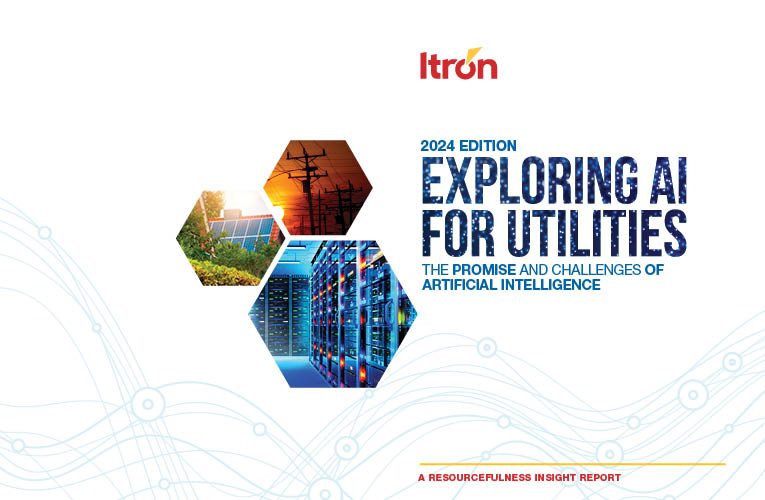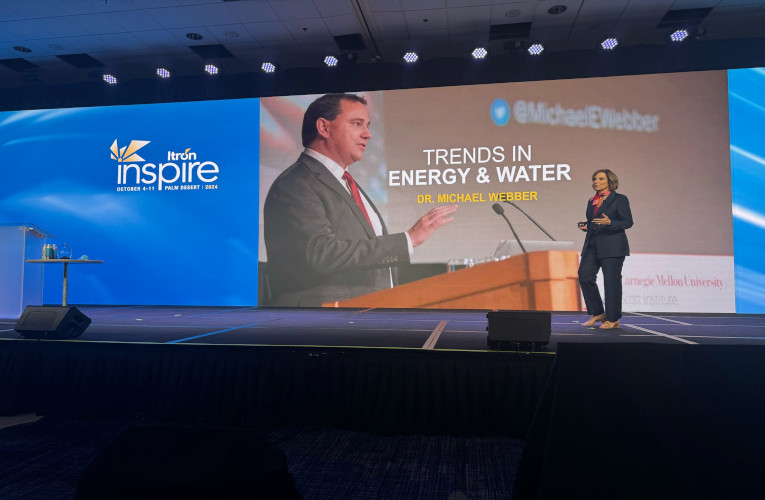
Itron Inspire
The Age of AI for Utilities is Here
Earlier this week at Itron Inspire, I shared the findings of our recent research, published in our Resourcefulness Insight Report, Exploring AI for Utilities: The Promise and Challenges of Artificial Intelligence. The report reveals several pivotal insights regarding the role of artificial intelligence (AI) I and machine learning (ML) in the utility sector.
600 gas and electric utility executives from six countries were asked to rank their biggest challenges today and the next five years. The results were the same:
- Keeping up with the increased demand for electricity
- Enhancing safety in the gas and electric distribution systems
- Integrating distributed renewable energy sources
So, what is driving the energy demand? Utility executives ranked these as their top three demand drivers.
- Data Centers for cloud computing/AI – 40%
- New residential and commercial construction - 32%
- Sustainability initiatives - 31%
While AI is a big contributor to increasing energy demand, utilities also see it as a way to better address safety concerns, with 43% ranking AI/ML to help them detect and manage potentially dangerous situations. The following are some additional takeaways.
- Recognition of AI's Importance: A significant 86% of utility executives recognize the critical nature of AI and ML in overcoming operational challenges. This acknowledgment marks a shift towards a more tech-savvy approach to energy management.
- AI Projects Underway: The AI and ML movement is further along than many might expect. Nearly one in four utilities (22%) report they have these technologies “fully integrated” into their operations. Another three in five (60%) say they have made significant investments in several mature projects.
- AI/ML Intelligence at the Edge: AI and ML won’t be able to deliver their business value without the quality and trustworthy data to feed it. For this, edge intelligence endpoints like sensors and AMI meters are key. More than one third (36%) see AI and ML enhancing edge intelligence environments through real-time anomaly detection, while 33% see it improving system efficiency improvement. An estimated 28% expect edge intelligence and AI/ML will work together to better manage load shedding and shifting.
- Implementation Challenges: Despite widespread enthusiasm for AI and ML, many utilities face barriers to adoption. Key challenges include a lack of expertise, high implementation costs and concerns regarding data infrastructure, which collectively hinder progress.
- Top Use Cases: Utility executives highlight the primary applications of AI and ML, emphasizing safety enhancements, cybersecurity threat detection and predictive maintenance as critical areas of focus.
As the utility sector evolves, the path forward demands both strategic investments and a willingness to adapt. By embracing AI and ML, utilities can optimize their operations, enhance safety protocols and ultimately create a more resilient energy ecosystem.
As utilities prepare to meet the challenges of tomorrow, these technologies will be pivotal in driving innovation, enhancing safety and ensuring a sustainable energy future for all.
To explore more about the future of AI in utilities and its implications, download a copy of Itron's 2024 Resourcefulness Insight Report and/or the actual research at itron.com/resourcefulness.
Related Articles
HTML Example
A paragraph is a self-contained unit of a discourse in writing dealing with a particular point or idea. Paragraphs are usually an expected part of formal writing, used to organize longer prose.



